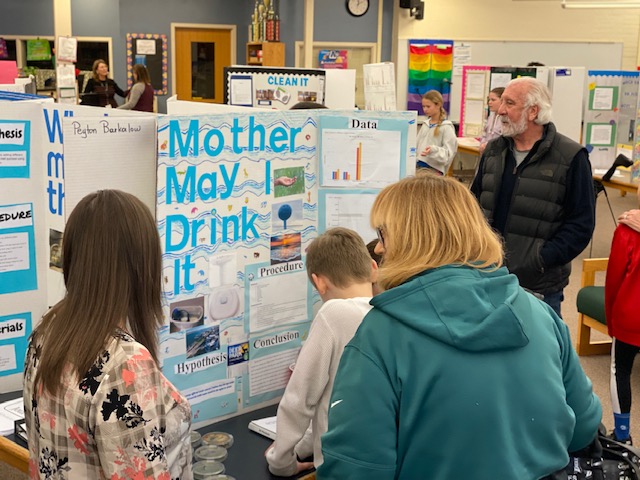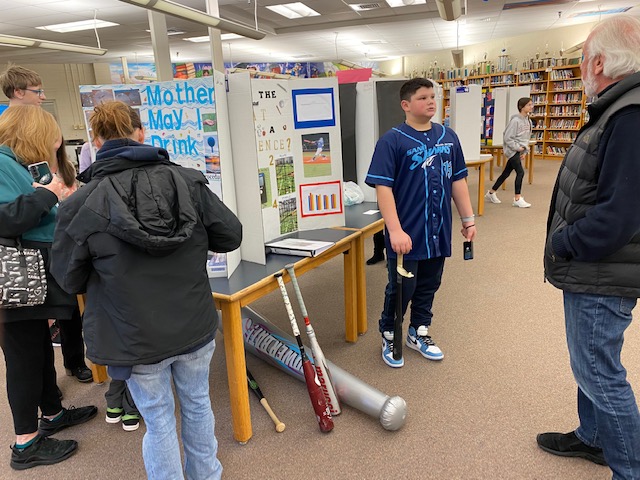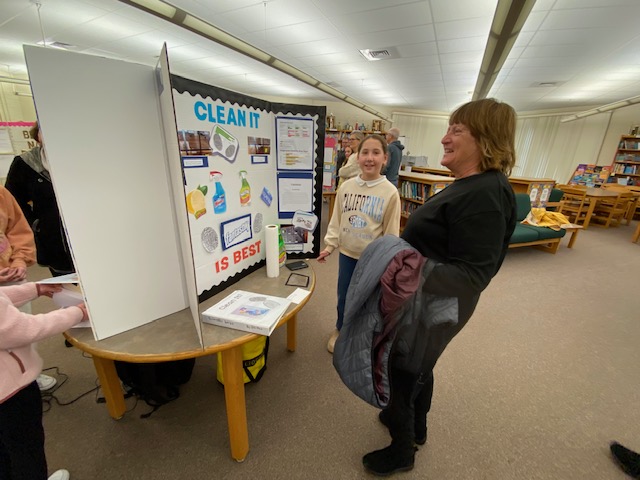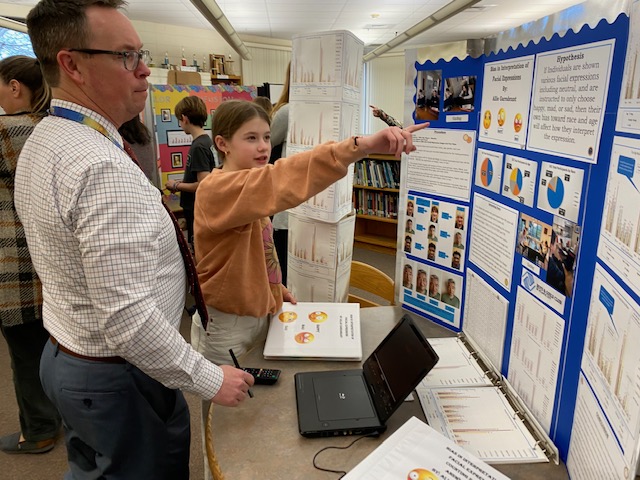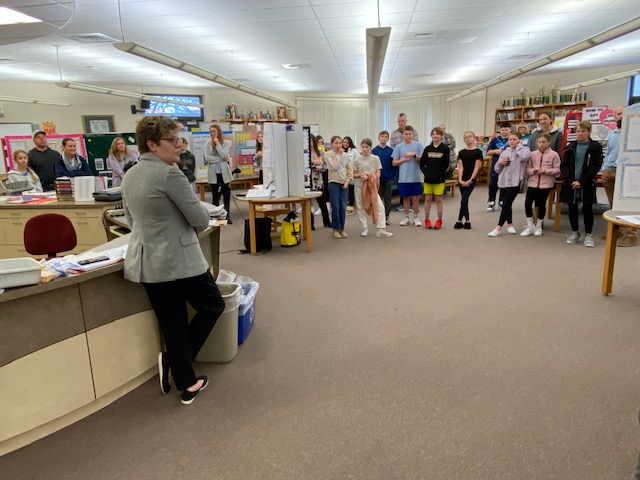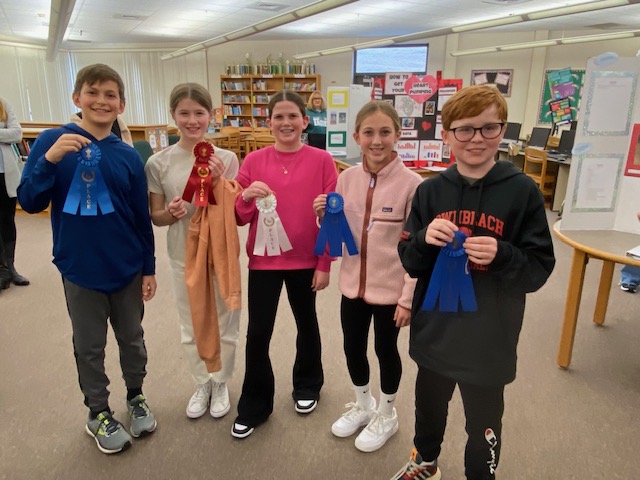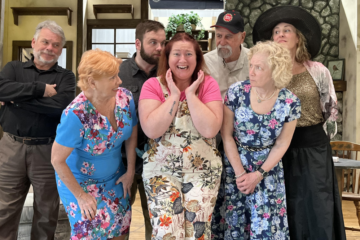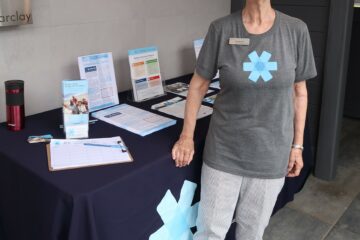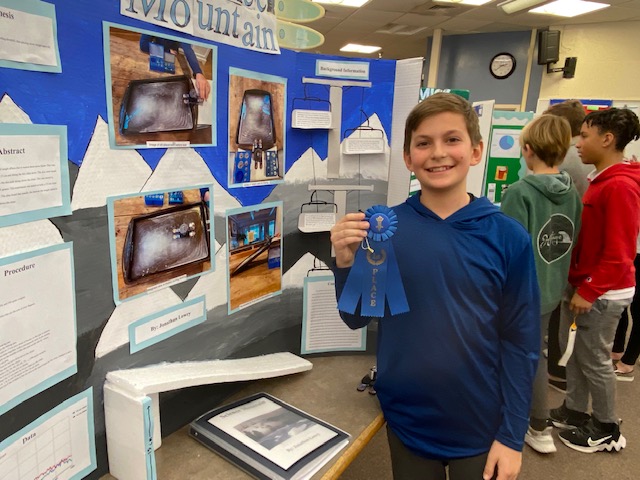
Jonathan Lowry took first place in the Tighe School Science Fair.
By NANETTE LoBIONDO GALLOWAY
MARGATE – Sixth grade students at the Eugene A. Tighe Middle School showcased their science projects during an open house held in the Michael Becker Library Wednesday. Among the projects on display were investigations into the most effective cleaning products, the longest wearing and best coverage nail polishes, three types of bridges made from toothpicks and a study on how facial expressions influence bias in age and race.
According to science teacher Chelsi Crompton, the students selected their topics in November and their journals detailing processes and procedures for conducting their investigations in December.
“The students selected their own topics based on something they were interested in,” Crompton said.
Students were coached on how to write up their hypothesis and conclusions, but most of the work was done by students on their own, although several students said their parents provided some guidance on how to get their work done well and on time.
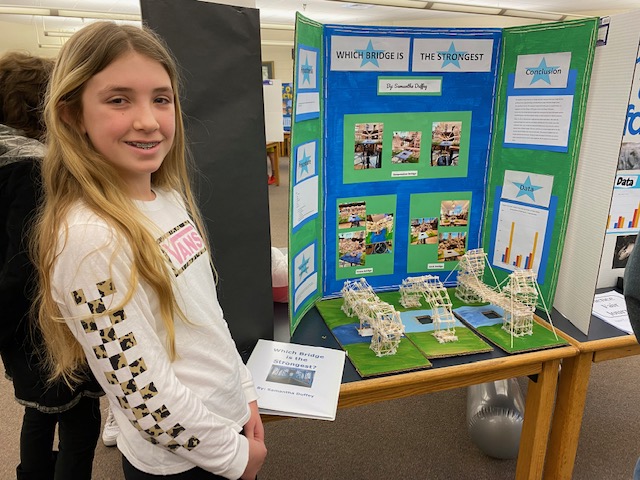
Samantha Duffey built toothpick bridges for her science fair project.
Samantha Duffey said she was having trouble finding a topic until her dad, Brian, a city firefighter, suggested she replicate the science fair project he did when he was in the eighth grade at the Tighe School.
“He helped me with gluing the bridges and finding a way to determine which is the strongest,” she said.
Her intricate work showed three different types of bridges. She added weight while building the bridges to determine which was the strongest type of bridge.
“The conclusion was that the suspension bridge was the strongest and the most flexible,” Samantha said.
Crompton said the projects were judged on experimental design, interpretation of the data compiled, and verbally communicating their hypothesis, processes and conclusions to the judges. Students were interviewed in the morning by judges Loreen Cohen, Luanne Amodeo, Cliff Melder and Brian Crompton.
Ribbons were awarded to the first, second and third place projects along with two honorable mentions.
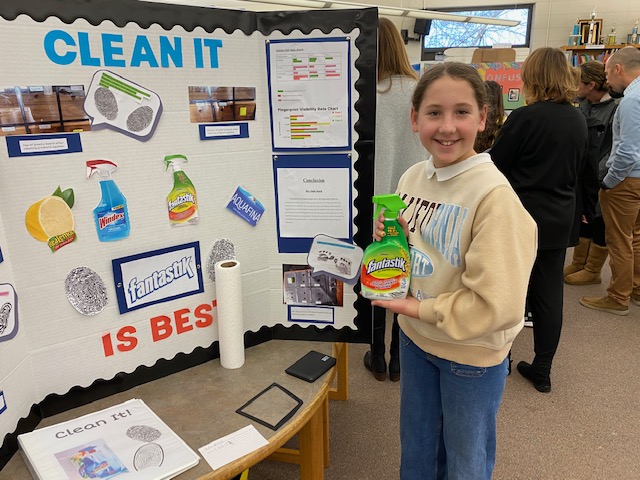
That’s Fantastic Julia Koch.
Homemakers will be especially interested in the results of Julia Koch’s project that determined which would be the best household cleaner.
“My mom has a glass tabletop that always has fingerprints on it, and I wanted to find the best cleaning agent to remove those gross fingerprints,” Julia said.
The four cleaning agents she investigated included water, lemon juice, Windex and Fantastik. She used an ink pad and graphite powder to create fingerprints in six squares on a glass panel. Her method to clean the panels included just one stroke with each cleaning agent, and she recorded the results on a visibility chart.
“Water just smeared it, and so did the lemon juice. The Windex removed most of the fingerprints but there was some residue left behind with just one stroke. The Fantastik worked fantastic,” she said.
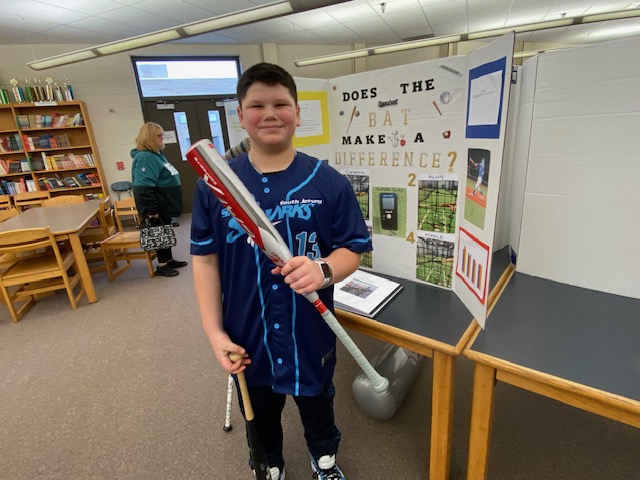
Bradley DeFeo plays baseball and based his science fair project on finding the best bat.
Bradley DeFeo didn’t know his batting average playing for the South Jersey Sandsharks travel team, but he learned which type of baseball bat would hit the hardest.
“I thought the composite bat would hit the hardest and it turned out to be correct,” he said. “Although it doesn’t hit as hard, the metal aluminum bat was the second best.”
Bradley tested fiber, composite, wooden and metal bats three times and with each swing recorded the velocity using a radar gun. He recorded kilometer measurements, which he said would be more accurate.
“I only did it three times with each bat because I broke my pinky finger playing basketball. I would have done more but my finger was hurting,” said Bradley, who uses a composite bat when he plays.
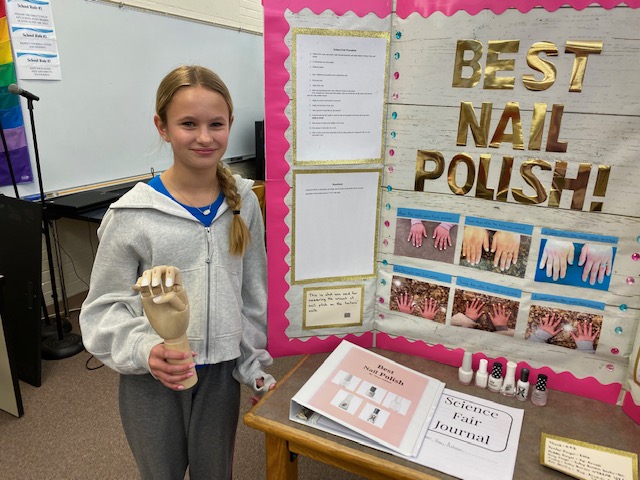
Opi is the best nail polish, but the most expensive, Vessa Ashmen said.
Young ladies will be happy to know that you get what you pay for in Vessa Ashmen’s project to determine the nail polish with the best coverage and longest wear.
She tested five different brands of white nail polish by painting each finger with a different nail polish five times.
“It turned out that the most expensive nail polish, Opi, worked the best. It lasted the longest without chipping and provided good coverage. The cheapest brand provided the sheerest coverage,” Vessa said.
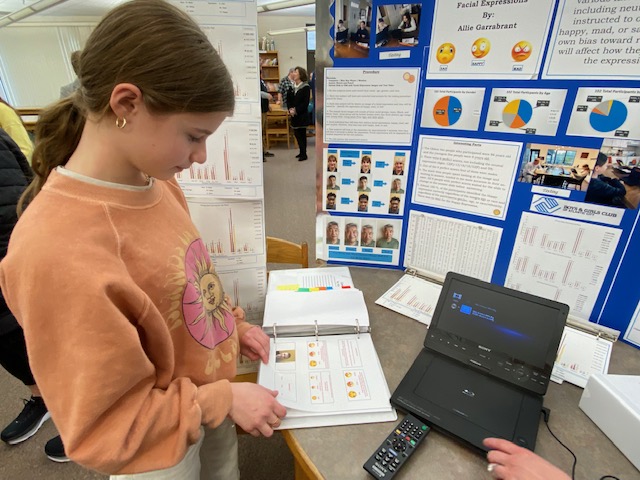
Allie Garrabrant tested 102 people and compiled extensive data on participant’s biases.
Allie Garrabrant took second place for her project, which included extensive data compiled in a three-inch binder.
“I like human behavior and wanted to see how people interpret different facial expressions,” Allie said.
She hypothesized that if individuals are shown various facial expressions and asked to choose from happy, sad, mad or neutral that their own bias toward race and age would be revealed.
She tested 102 people and held 306 trials to obtain feedback from participants after they viewed facial expressions on a computer screen. She recorded their responses on an Excel spreadsheet.
Her hypothesis was proven correct and showed perceived bias in age predominantly in the mad and sad expressions. For the neutral expression both race and age affected bias.
“So bias based on the perceived age and race of the person making the expression affected how participants evaluated the expressions,” she wrote in her conclusion.
If Allie had to do it again, she would select a wider variety of race, including more Asian and Black participants.
“This experiment could be used in real life to show how people may be interpreting others, which can result in biases and stereotypes due to their own opinions and experience,” she opined.
And, Jonathan Lowry took first place for his project to determine if weight affects how fast skis can move down an incline.
“I froze water in a baking sheet and measured how long it took for the skis to run down the incline,” he said.
Jonathan tested the miniature skis 100 times at several different inclines, and the greater the slope the higher the velosity, he said.
“My hypothesis was proven true that weight does affect how fast you can ski,” he said.
“I’m really proud of all my students for the work they have done,” Crompton said.
The winners will have their projects entered into the 48th annual Jersey Shore Science Fair being held at Stockton University on March 18.
The winners are:
Honorable Mentions – Jack Voigt and Nellie Schwegman
Third Place – Zoe Lieberman
Second Place – Allie Garrabrant
First Place – Jonathan Lowry
Copyright Mediawize, LLC 2023
